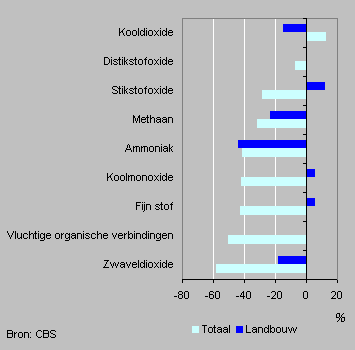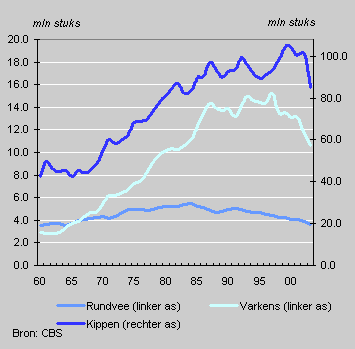Less ammonia emitted in agriculture

The emission of ammonia in agriculture dropped from 220 million kilograms in 1990 to 123 million in 2002. This 44 percent decrease is the consequence of reduced livestock numbers, low-emission livestock sheds and improved manure spreading practices, whereby manure is injected beneath the soil surface.
Less ammonia, more small particulates and nitrogen oxide
The emission in agriculture of other air pollutants has also decreased. The emission of methane and sulphur dioxide, for example, have fallen by 23 and 18 percent respectively since 1990. There was further a noticeable decrease in the emission of carbon dioxide in agriculture (-15 percent), while the total emission of carbon dioxide in the Netherlands rose by nearly 13 percent. The decrease was mainly caused by lower fuel use.
Opposite these decreases there were increases in the emission of very small particulates and nitrogen oxide. The emission of these two substances by agriculture rose, while the total emission in the Netherlands decreased. The increase in the emission of fine particles by agriculture was caused by the increase in the number of chickens. In 2002 there were 101 million chickens, compared with 93 million in 1990.
Changes in air pollution between 1990 and 2002

Downward trend will continue
In view of the decreasing livestock numbers, the emission of ammonia will fall further in 2003. The numbers of chickens, pigs and cattle are all substantially lower in 2003 than in 2002: the fowl pest epidemic resulted in a 16 percent decrease in the number of chickens, the number of pigs is 9 percent lower and cattle numbers are 7 percent down on 2002.
Livestock numbers, 1960-2003

Ed Zonneveld